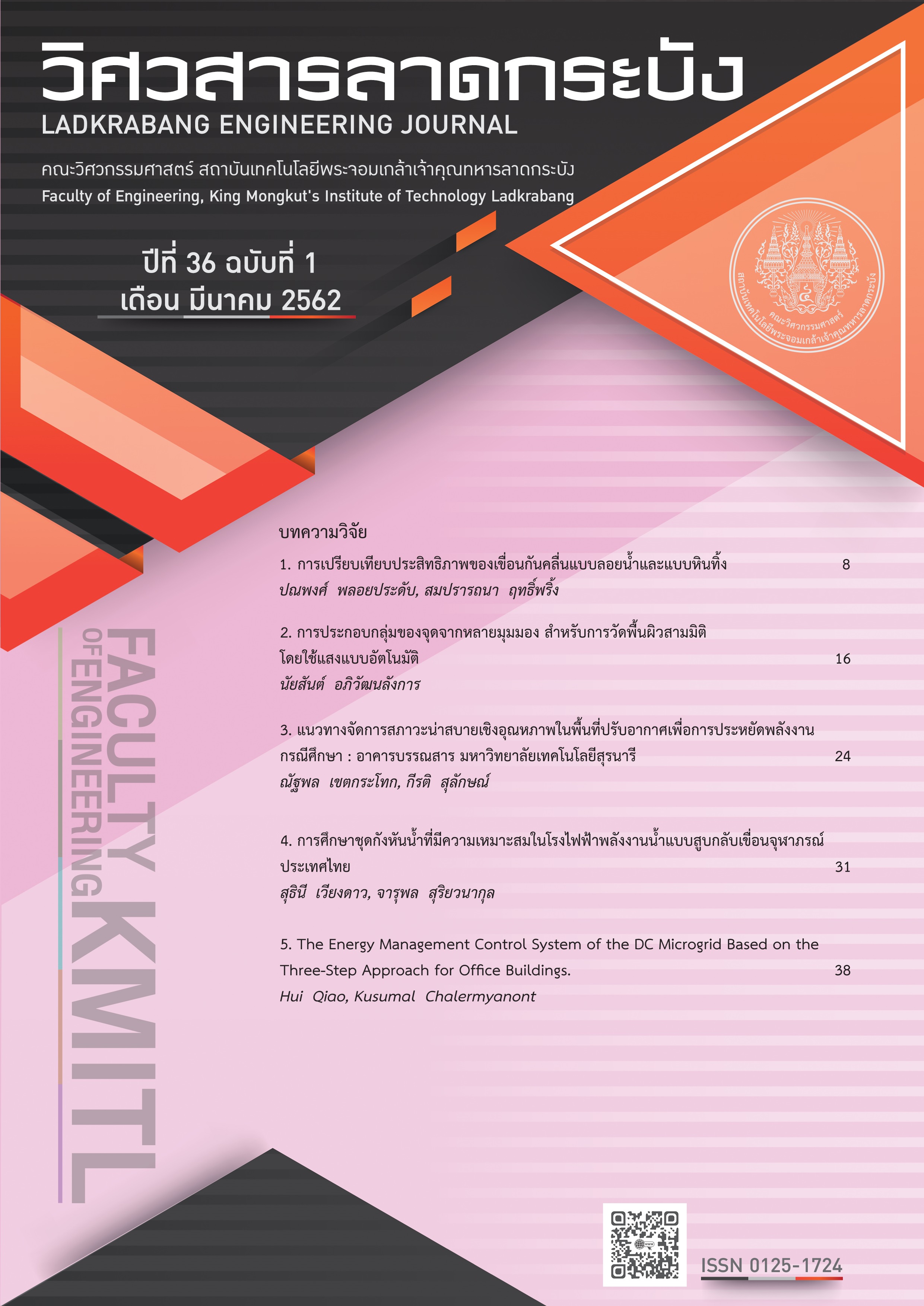Comparison of Efficiency of Floating Breakwater and Rubble Mound Breakwater
Keywords:
floating breakwater, rubble mound breakwater, wave transmission coefficient, wave basinAbstract
This study aims to design floating breakwater model and the rubble mound breakwater model. The two types of breakwater model were investigated to compare the efficiency. Moreover, the influence of waves at different wave height which affected to the changing of wave characteristics was examined as well. The floating breakwater was designed in three types of structures: the bioball 1, the bioball 2 (with filter mat) and the foam. Wave transmission coefficient (Ct) of three types floating breakwaters were determined in wave basin at 25, 27.5 and 30 cm of the water depth with 0.025-0.048 of wave steepness. Moreover, the foam floating breakwater was investigated at drowning level 50% and 80%. The results in the floating type found the Ct of the foam floating breakwater at drowning level 80% were 0.58-0.97which represented the highest efficiency for reducing Ct. The result of comparison between the rubble mound breakwater and the foam drowning level 80% was found that the rubble mound breakwater could reduce Ct better (0.35-0.66) because the porosity and the ratio of drowning level could be affected to Ct. However, Ct from the breakwater were found similarly in some wave steepness.
References
Bruce L. Mcartney, “Floa i B ak a D si ,” Jou al of Wa ay, Po , oas al, a Ocean Engineering, vol. 111, pp. 304-318, 1985.
Saengsupavanich C., “The design of breakwater for coastal protection,” Kasetsart University, Bangkok, 2015.
Saengsupavanich C., “The design of breakwater for coastal protection,” Kasetsart University, Bangkok, 2015.
Chuoikan M., 25 May 2016, “Physical properties of soils,” Source: https://krumanit.cmtc.ac.th/ main/index.php?option=com_content&view=article&id=75&Itemid=2, 2011.
D.P. Rizzetta, M. R. Visbal1 and G. A. Blaisdell, “A im -implicit high-order compact differencing and filtering scheme for large- y simula io ,” International Journal for Numerical Methods in Fluids, vol. 42, pp. 665–693, 2003.
A. Toffoli, M. Onorato, A.V. Babanin, E. Bitner-Greegrsen, A.R. OSBORNE and J. Monbaliu, “ co -Order Theory and Setup in Surface Gravity Waves: A Comparison with Exp im al Da a,” Jou al of Physical Oceanography, vol. 37, pp. 2726-2739, 2007.
T. A. A. Adcock and P. H. TAYLOR. 2009. “Es ima i oc a av i c io al sp a i f om a Eul ia su fac l va io im his o y,” Proceedings of The Royal Society, The Royal Society, University of Oxford, Unitied Kingdom pp. 3361-3381, 8 November 2009.
Mama V., “Wave characteristics of un-equally space pile breakwater,” Thesis, Chulalongkorn University, 2010.
H. Wang, H. Xu, P. Liu, J. Duan, H. Chen and B. Wang , “Experimental study on the dissipation Characteristics of curtain-type flexible floating breakwater ,” Journal of Coastal Research, vol. 73, pp. 410-414, 2015.
E. Peña, J. Ferreras and F.S. Tembleque, “Expimental study on wave transmission coefficient, mooring lines and module connector forces with different designs of floating breakwaters,” Ocean Engineering, vol. 38, pp. 1150–1160, 2011.
G. H. Dong, Y.N. Zheng, Y.C. Li, B. Teng, C.T. Guan and D.F. Lin , “Experiments on wave transmission coefficients of floating breakwaters,” Ocean Engineering , vol. 35, pp. 931–93, 2008.
Downloads
Published
How to Cite
Issue
Section
License
The published articles are copyrighted by the School of Engineering, King Mongkut's Institute of Technology Ladkrabang.
The statements contained in each article in this academic journal are the personal opinions of each author and are not related to King Mongkut's Institute of Technology Ladkrabang and other faculty members in the institute.
Responsibility for all elements of each article belongs to each author; If there are any mistakes, each author is solely responsible for his own articles.






